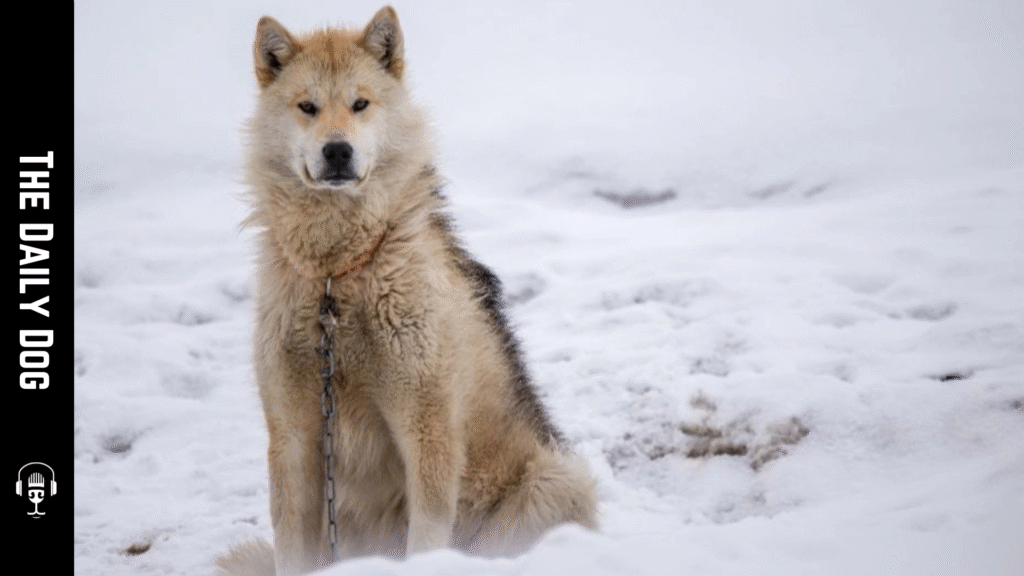The Greenland Dog is a remarkable breed renowned for its strength, resilience, and deep-rooted history in the Arctic. As a loyal and hardworking breed, the Greenland Dog has been an essential part of Arctic expeditions, indigenous cultures, and sled dog teams for centuries. In this blog post, we will explore the history, characteristics, temperament, care, and significance of the Greenland Dog in modern times, highlighting why this majestic breed continues to capture the hearts of dog lovers around the world.
Origins and History of the Greenland Dog
The Greenland Dog is believed to have originated over 4,000 years ago, making it one of the oldest domesticated dog breeds in the Arctic region. Its ancestors are thought to be related to the Siberian Husky and other Arctic sled dogs, with genetic evidence indicating a shared lineage among indigenous Arctic peoples.
Historically, the Greenland Dog played a vital role in the survival of the native Greenlandic Inuit, assisting them in hunting, transportation, and carrying loads across icy terrain. These dogs were bred for endurance, strength, and adaptability to extreme cold climates. Their ability to pull heavy loads over long distances in icy conditions made them indispensable to both Arctic explorers and local communities.
During the Age of Exploration, particularly in the early 20th century, the Greenland Dog gained international recognition through Arctic expeditions led by explorers such as Roald Amundsen and Robert Peary. These expeditions relied heavily on well-trained Greenland Dogs for transportation and survival in uncharted icy wildernesses.
Physical Characteristics of the Greenland Dog
The Greenland Dog is a large, muscular, and powerful breed. Their physical features are well-suited for life in the harsh Arctic environment. Here are some key characteristics:
Size: Males typically weigh between 85 and 115 pounds (39 and 52 kg), while females weigh slightly less, generally around 75 and 95 pounds (34 and 43 kg). They stand about 20 to 24 inches (50 to 61 cm) tall at the shoulder.
Coat: They have a dense, double coat that provides insulation against freezing temperatures. Their fur is straight or slightly wavy, and comes in various colors, including black, white, gray, or a combination of these.
Head and Ears: The breed has a broad head with a strong jaw and a well-defined stop. Their ears are triangular, erect, and set high on the head, giving them an alert expression.
Eyes: Their eyes are almond-shaped, typically dark brown, conveying intelligence and alertness.
Tail: The tail is thick, bushy, and carried high, often curling over the back.
The overall appearance of the Greenland Dog exudes strength, agility, and endurance, making it a natural choice for sled dogs and working companions.
Temperament and Behavior
The Greenland Dog is known for its noble and loyal nature. They tend to be reserved with strangers but are deeply affectionate with their families. Their temperament is characterized by intelligence, independence, and an innate work ethic.
Loyalty and Bonding: Greenland Dogs form strong bonds with their owners and are renowned for being protective of their loved ones. Their loyalty makes them excellent family dogs, especially in active households.
Intelligence: As a brilliant breed, Greenland Dogs excel in activities that challenge their mental and physical abilities. They are quick learners but can sometimes be stubborn, requiring consistent training.
Independence: This breed has an independent streak, which historically helped them work autonomously in the Arctic. While this trait makes training a bit challenging for novice owners, it also means they are confident and self-reliant.
Socialization: Proper socialization from a young age is essential to ensure they get along with other animals and people they don’t know. Early exposure to different environments, people, and other dogs helps in developing a well-rounded temperament.
Exercise Needs: Greenland Dogs are high-energy dogs that require ample exercise to stay healthy and happy. Daily long walks, runs, or participation in sledding or pulling activities are ideal.
Care and Maintenance of Greenland Dogs
Caring for a Greenland Dog involves understanding their unique needs, especially their physical activity requirements and coat maintenance.
Exercise and Activity
Given their history as sled dogs, Greenland Dogs are highly active and require a lot of physical exercise. They thrive in environments where they can run and work on a regular basis. Activities such as sledding, carting, agility training, or obedience exercises are excellent outlets for their energy.
Grooming
Their dense double coat requires regular brushing—at least 2-3 times weekly—to prevent matting and manage shedding. During shedding seasons, more frequent brushing is necessary to remove loose hair and maintain a healthy coat.
Nutrition
A balanced diet rich in high-quality proteins and fats is essential to support their active lifestyle and maintain a healthy weight. Consult a veterinarian for tailored dietary advice, especially if the dog participates in intense physical activities.
Health Considerations
Overall, Greenland Dogs are hardy and resilient, but like many breeds, they are prone to specific health issues, including:
- Hip Dysplasia: A common concern in large breeds, regular veterinary check-ups can help detect and manage this condition early.
- Eye Conditions: Some may be prone to specific hereditary eye issues; regular eye examinations are recommended.
- Obesity: Due to their active nature, maintaining a proper diet and exercise routine is vital to prevent obesity.
Routine veterinary care, a balanced diet, and regular exercise ensure a long, healthy life for Greenland Dogs, which can live up to 12-15 years.
Training and Socialization
Training a Greenland Dog requires patience, consistency, and the use of positive reinforcement techniques. Their independent nature means they might test boundaries, but with firm, gentle guidance, they can become obedient and well-behaved companions.
Early socialization is crucial for preventing territorial or aloof behaviors. Exposure to various environments, sounds, and other animals helps foster a confident and well-adjusted dog.
Due to their working heritage, they respond well to activities that challenge both their physical and mental abilities. Incorporating agility, obedience, or pulling exercises can be both stimulating and rewarding.
Greenland Dog in Modern Times
While traditional sledding and hunting are less common today, the Greenland Dog remains a symbol of Arctic culture and resilience. Many enthusiasts and sled dog racing communities continue to promote the breed for sporting and recreational purposes.
In recent years, the Greenland Dog has gained popularity as a family pet in colder climates. Their loyalty, intelligence, and robust nature make them suitable for active families with experience in handling large, energetic breeds.
However, potential owners should be aware of the breed’s high energy levels, need for socialization, and grooming requirements. They thrive best in environments where they have space to run and work.
Ethical Considerations and Responsible Ownership
Owning a Greenland Dog entails a commitment to providing proper training, socialization, and care. Due to their instincts, they should be kept in environments that allow for physical activity and mental stimulation.
Adopting from reputable breeders or rescue organizations ensures the dog’s health and well-being. Responsible ownership also involves understanding the breed’s needs and respecting its Arctic heritage, meaning it is best suited for colder climates or homes with appropriate heating and shelter.
Conclusion
The Greenland Dog is a breed that embodies strength, resilience, and noble companionship. With their impressive history rooted in the Arctic, these dogs continue to exemplify endurance and loyalty. Whether as working sled dogs, companions, or active family pets, Greenland Dogs thrive in environments that challenge them physically and mentally.
Their unique blend of independence and affection makes them a fascinating breed for experienced dog owners who understand their needs and appreciate their heritage. If you are prepared for an active, intelligent, and loyal companion, the Greenland Dog could be the perfect addition to your family, especially if you live in a colder climate or enjoy outdoor adventures.









